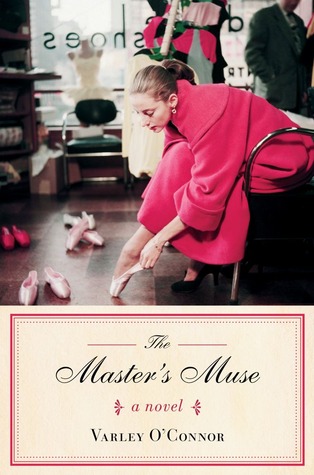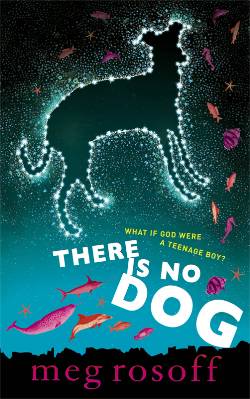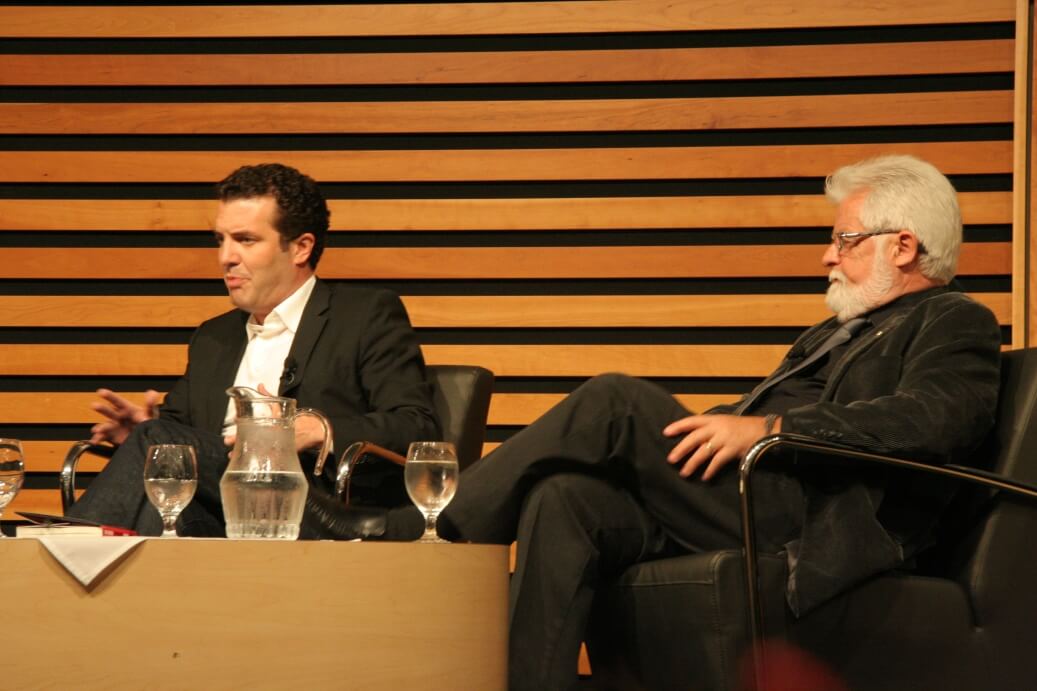Introduction
Part 1: The Pacific Journal of Adam Ewing (first half)
Part 2: Letters from Zedelghem (first half)
Part 3: Half-Lives: The First Luisa Rey Mystery (first half)
Part 4: The Ghastly Ordeal of Timothy Cavendish (first half)
Part 5: An Orison of Sonmi~451 (first half)
Part 6: Sloosha’s Crossin’ an’ Ev’rythin’ After (whole story)
Part 7: An Orison of Sonmi~451 (second half)
Part 8: The Ghastly Ordeal of Timothy Cavendish (second half)
The Story So Far . . .
From a grim future and dire consequences, we return to a yarn that seems rather more frivolous. When we parted company with Timothy Cavendish, he had suffered what seemed to be fireworks in his head. He has had a minor stroke, and takes several days in early November to regain his senses. Assuming the “little witch” he saw just before arriving at Aurora House was dressed the part for Halloween, he hasn’t been out too long, but it takes him until early December to really come back to his old caustic self. He remembers that he is not a patient but a prisoner, and that the old people around him aren’t his friends but senile fellow inmates. He begins to refer to them as “the Undead” and “zombies,” and they in turn act the part.
Attended by Dr. Upward, who seems irritated by sick people, and plagued by doubts about why his brother Denholme has left him imprisoned for over a month—for surely the joke has worn thin by now?—Tim looks for escape. He wonders if his brother has found out about the dalliance between Tim and Denholme’s wife… He finds a form of limited escape in reading, and changes his opinion of one of the few things on hand to read, Half-Lives: The First Luisa Rey Mystery. Giving the half of it that he has a thorough edit, he decides the book has great potential. “The insinuation that Luisa Rey is this Robert Frobisher chap re-incarnated” will have to go, however (p. 357). He thinks that’s just silly.
As Timothy plots his escape, he is observed eyeing the perimeter and security systems by Ernie Blacksmith and Veronica Costello, two of the more with-it residents. Invited into the boiler room, which Ernie maintains in exchange for a few freedoms (such as the right to drink the scotch given to him by the coal deliverers). Sharing a drink, the three, along with the ancient Mr. Meeks, who only ever says “I know! I know!”, talk about ways out of Aurora House and form a friendship.
They muse about the tragedy of being old: “[we] commit two offenses just by existing. One is Lack of Velocity. We drive too slowly, walk too slowly, talk too slowly. The world will do business with dictators, perverts and drug barons of all stripes, but being slowed down it cannot abide. Our second offence is being Everyman’s memento mori. The world can only get comfy in shiny-eye denial if we are out of sight” (p .361). They observe how irritating it is that the visiting son of Mrs. Hotchkiss leaves his keys in his Range Rover: that is how unthreatening he finds the old people.
Timothy formulates a plan: sneaking into the office in the middle of the night, he tries to dial Mrs. Latham to come and spring him. Post-stroke, however, he cannot remember her number. He tries the only number he can remember: Denholme’s. His brother’s wife picks up and seems drunk or addled. She scorns Tim for not showing up to Denholme’s funeral. Tim is in shock. Denholme is dead? This explains how so much time could have passed with no one coming for him. But the call is cut short: the evil Withers discovers him and hangs up the phone.
At breakfast, Nurse Noakes tries to shame him as a thief, and the Undead all point and call him out. Ingeniously, he claims St. Peter came to him in a vision and told him his brother was dead, and so he simply had to use the phone. And he has discovered it is true! Still, the office is now locked. So there goes that plan. Further, Veronica and Ernie tell him to cool it or Noakes will poison his food again, implying that Tim’s first stroke was induced. Tim doesn’t believe it—heart problems run in the family and are probably what felled his brother—but still, the doubt is planted. Ernie, angry that he can no longer use the phone to check cricket scores, gets in a fight with Tim, and Tim sulks his way through several days, friendless and alone.
Reverend Rooney visits for dreary Christmas eve and Tim beseeches him to send a Christmas card to Tim’s sister, saying he doesn’t want to bother Noakes. Rooney has clearly heard about the St. Peter episode, but takes the note (which is, of course, really a plea for escape addressed to Mrs. Latham). Tim awakens on Christmas morning to find something in his stocking: the note, ripped to shreds.
Irritated by the lack of stimulation (nothing more than “where is Dierdre the care worker’s cell phone?” is happening), Tim makes up with Ernie and Veronica and comes back to the fold. They hatch another plan, one that involves all three of their escapes, with help from Mr. Meeks. It’s a “high-risk sequence of toppling dominoes” (p. 374) designed to get them not just out the gates but to a safe place and a new life.
Using the stolen cell phone, because of course it is Ernie who has caused it to be “waylaid,” Tim calls Mrs. Hotchkiss’ son. Posing as a doctor, he claims the old woman is about to die and wants her son with her so that she can tell him where she’s hidden the family gems. More interested in the fortune than his dying mother, the younger Hotchkiss swears to be over in half an hour. Next, Ernie tells Noakes that Tim has died. Going to his room to confirm it, she walks in and Tim dashes out. He and Ernie lock her in the room and make a break for it.
Meeting the Hotchkisses at Reception, they direct him to his mother’s room, cajoling him with promises of inheritance, and then jump in the car. Major problem? The keys aren’t in the ignition, like they usually are. Tim is sure of their defeat, but Veronica finds several keys on the ground, including the one they need. The Hotchkisses have discovered the deception by now and reappear with Withers. As they try to get into the car, Tim is able to get ‘er started and away they go, ramming open the gates and flying off to freedom. Congratulating themselves on an escape well done, they’re shocked to hear someone say “I know! I know!” from the back seat. Somehow, against “the laws of ruddy physics!” (p. 382) Mr. Meeks has gotten in the car and is off for a drive with his friends.
Into Scotland they drive, stopping at a pub for their first proper drink and meal in who knows how long. The pub is packed with people watching the match and having a grand time. But Timothy has a horrible realization. He’s left the map with their path marked upon it in his room. It will lead their captors directly to them. And sure enough, Noakes, Withers, and the Hotchkisses appear in the doorway. But it’s Mr. Meeks to the rescue. Shouting in a heavy Scottish brogue, he calls upon his countrymen for help, and they rise to the occasion, attacking the southern marauders and letting our four intrepid heroes escape.
Veronica and Ernie plan to elope and settle with friends in Scotland, and Tim suspects they’ll let Mr. Meeks stay with them. He, meanwhile is back to London, where Mrs. Latham is delighted he is alive and informs him that she videotaped the Hogginses trashing the office, and is using the footage as blackmail to keep them at bay, with a promise of future royalty cuts. Knuckle Sandwich is to be made into a movie, he shall get a ghostwriter to turn his notes about his ordeal into a book…and possibly a movie as well, and Hilary V. Hush has sent the brilliant second half of Half-Lives to Timothy. All is well.
Some Thoughts…
This is such a shockingly different read from Sonmi’s tale. The zany britcom feel, the blustery first person of the wonderfully self-important Cavendish, and the much smaller stakes form such a contrast, and I take a moment to marvel that they were actually written by the same author.
As we’ve talked about in previous posts, the idea of the polished, and therefore necessarily altered, narrative is strongly at play here. How much of what we read is real? Is there really a “Dr. Upward”? Did Mr. Meeks really only ever say “I know! I know!” and did he act as their deus ex machina. Was Tim really so viciously thwarted, so that even his note to Mrs. Latham is ripped to shreds and left in his Christmas stocking? It smacks of wonderfully grandiose exaggeration. I have no doubt the nursing home was terrible for Timbo, but was it really as evil as he portrays it, or are its players necessarily enhanced to stand against his unimpeachable role in his own life’s narrative?
The structure is interesting: these are Tim’s notes and not actually the final book, as he points out at the end and as particularly noticeable by his many tongue-in-cheek (but partially serious, I suspect) directives to a future filmmaker of the movie version of Tim’s life. I think Mitchell is poking a bit of fun of books that are obviously written with a screen adaptation in mind here, and of course he’s laying the backshadowing (if you’ll let me coin that phrase) for the fact that Sonmi watched his tale as a “disney” rather than reading it as a book.
Although this section does seem rather frivolous when compared to the two that come before it, Tim is dealing with some pretty heavy issues here, namely that of aging, and he ageist biases our society has. The way the residents of Aurora House are infantilized and possibly abused is appalling and yet not terribly shocking. They are hidden away there by younger relatives, conveniently “forgotten” so that they don’t get in the way or, as Veronica observes, remind the young’uns that old age is coming. It’s only a small step forward to Sonmi’s time, when all of the old people are “dewdrugged” to look young, and Sonmi is horrified by the way the people of Cavendish’s time sag and wilt. That said, the way consumers are either euthanized or dropped into pits like Huamdonggil in Sonmi’s time is not so different from the way old people are banished to places like Aurora House in our own time.
Again, there may be exaggeration here, but Hotchkiss’s interest only in finding the jewels and not at all in his mother’s wellbeing is sad and probably not too far from the truth. Is it so wrong that the elderly Ernie and Veronica have found love and want to elope? This would be forbidden in Aurora House.

Timbo also brings up questions of artistic merit. As he did in the first half of his tale, Timbo does a good job of denigrating the ideas and writing in Half-Lives at first, saying everything that real-life critics of that section often say, and thereby showing in that lovely meta way that Mitchell knows exactly what he’s done with Luisa Rey’s story. His change of heart when starved for any other entertainment is rather endearing, as he muses that the book is no more derivative than anything else, “as if there could be anything not done a hundred thousand times between Aristophanes and Andrew Void-Webber! As if Art is the What, not the How!” (p. 357). Heh, Void-Webber. This points, of course, to the idea of reincarnation, of history repeating, that we’re all following patterns over and over, shaped by chance or fate but still going through similar situations and problems, all throughout time. Also, Timbo’s creepily funny sexual/Oedipal fantasy of bedding Hilary V. Hush and offering her a book contract is made all the funnier when he discovers that this Hilary is male. (“V. is for “Victor,” it turns out, though this could just be Cavendish’s off-the-cuff remark and that might not be what the V stands for…is this someone from Luisa’s time who has fictionalized her story? We can’t say for certain here.)
And speaking of language, I find Timothy’s narrative pure delight, and again a bit of a weight off after the heaviness of “Soosha’s Crossin'” and Sonmi’s orison. “The asexual care worker, whose name was Deirdre, unsurprisingly, strung tinsel from the light fittings and failed to electrocute herself,” he laments in utter deadpannery (p. 355–6). He’s just so wonderfully droll. He refers to himself post-stroke as going from Falstaffian to John of Gaunt. I love him as a narrator, I really do.
Points of connection here aren’t as striking as the sweeping slavery narratives of other stories. Tim’s reference to Solzhenitsyn is a quiet nod toward Sonmi’s philosophical readings. He reaches for names like Margo Roker in his post-stroke state, and then refers to the Hoggins as a “hydra,” but these could both have come from his having read the first half of Half-Lives rather than a memory from a previous life. This is likewise the case with the “sensation of having lived through this very moment many times before” as the stolen car slides weightlessly on ice (p. 380). Tim can’t really be Luisa Rey reincarnated, because they are too close in history. He had to have been in his twenties or so at the time of Luisa’s capers on Swanekke Island. It’s a red herring. I think, in fact, this is the main reason for Timbo’s ghastly ordeal: it throws doubt on the whole thing. We still don’t know if Luisa’s story is fictional or not, which makes the first two stories fictional and which casts doubt on the comet-shaped birthmark in the last two stories. It makes it impossible to draw one-to-one comparisons. No one character is absolutely certainly any other one character. There is no promise that it’s the same set of souls living together over and over. It isn’t certain lessons or being taught or souls are evolving. Cavendish’s ghastly ordeal exists in its light, fun way to make our read that much more difficult. And then he complicates it all the more with this musing:
Three or four times only in my youth did I glimpse the Joyous Isle, before they were lost to fogs, depressions, cold fronts, ill winds, and contrary tides . . . I mistook them for adulthood. Assuming they were a fixed feature in my life’s voyage I neglected to record their latitude, their longitude, their approach. Young ruddy fool. What wouldn’t I give now for a never-changing map of the ever-constant ineffable? To possess, as it were, an atlas of clouds. (p. 373)
Tim applies our overarching theme of the cloud atlas to his single life’s journey, condensing the larger ideas we’ve been playing with so far. And yet he calls the cloud atlas a never-changing map, which echoes forward to Zachry’s musings about souls and the cloud atlas (p. 308). So are things constant, or aren’t they? By giving this book’s title, is Mitchell saying there is a fixed ineffability beyond our understanding?
Finally, we do have a few loose ends to the narrative, though that may because these are actually Tim’s notes we’re reading and not the final story. We don’t see Ursula again, though perhaps she exists only to show us what life Tim could have had, had he made better choices. In the life he is currently living, he doesn’t get a do-over. But he can try to set himself on a better path. His attitude seems somewhat improved at the end, and unlike Sonmi’s symbolic victory as she goes her to tragic death, Tim’s ending is a happy one. Business is good, his finances are in order, and he’s beginning a new chapter in his life without taking anything for granted, especially his health.
Please note I am currently away from my computer and have set this to auto-post, but I will be back on Thursday October 4th to respond to comments!
You might also like:
|
|
|








Perhaps it’s a stretch, but V. As a middle initial seems more than arbitrary. In V., Pynchon’s story of the sewers and the realization that it was time to return to the surface echoes Cavendish’s return to the outside world. Also noted that Cavendish refers to himself in the 1st person. (Stencil).
Another great chapter. The comedic lightheartedness was a welcome reprise, and I think your assessment of the “zany britcom” summed up the climax of the Fantastic Four’s departure from Aurora quite nicely.
In keeping with search for meanings-within-meanings, I’ve been googling random parts of the book to see what the wide world of the interwebs have in its collective knowledgebase. I thought that the pub name of the “Hanged Edward” had to be a reference, so I searched for those two words. Among the results was an entry for Edward H. Rulloff, who (paraphrasing wikipedia here), was “a noted philologist and criminal” of the 19th century who was admittedly gifted but also misguided and ended up being hanged for his crimes. It is also noted that Rulloff’s brain is on record as the “second largest ever recorded.” Interesting tidbit.
On a more superficial note, I found it interesting that Timbo described the crowd in the Hanged Edward as “watch[ing] TV soccer.” Would someone in Timothy’s part of the world call the game soccer, or football? For all his careful use of language, this hardly seems a misstep on Mitchell’s part…
As Mr. Meeks implored, “Are there nor trrruuue Scortsmen in tha hooossse” who can answer this?
I don’t think Cavendish being a possible Luisa Rey reincarnation is a red herring and here is why:
a) Zachry comments in his story that he could’ve been cutting his own throat when he kills the Konaman, while this is a comment on how we’re formed by our surroundings reflected in Somni’s answer about regret “How can I? ‘Regret’ implies a freely chosen, but erroneous, action; free will plays no part in my story.” and later Cavendish remark about Patience ” Patience’s design flaw became obvious for the first time in my life: the outcome is decided not during the course of play but when the cards are shuffled before the game even begins. How pointless is that?”, I’d argue btw. that the whole novel is also about ‘free will’ and formation of ‘who we are’ by were we’re born raised etc. hence the ever changing nature of the clouds (a theme more developed in the movie?). Zachry’s remark however can also be taken in the literal sence: Why should the travel of a soul be linear and follow a timeline.
b) the structure of the novel suggests that time is indeed meaningless from a metaperspective. I’ve wondered while reading what someone else thinks of Cavendish remark about time not bein an arrow, nor a boomerang but a ‘concertina’?
c) I’ve yet to meet a person with just one birthmark, so I suspect that Cavendish mentioning one precise, described by Georgette as ‘Timbo’s Turd which could be a more crude way of describing a similar form to the others, is just his way of either wanting to seem logical or trying to convince himself that it can’t be.
I still find Cavendish’d story one of my favourite. Yes it has a lighter feel, but I love all the more serious points (like the one about old age) just below the surface of that light demeanour. It’s sort of how a lot of people live right? We put on a happy face but there’s a lot more going on under the surface.
I also love how this story seems to have a foot in all the other stories (I suppose this is true of all the stories but I notice it the most here). There are so many intertwining references and connections and it really makes me respect and admire David Mitchell as an author.
One other Solzhenitsyn easter egg…he wrote a novella called “Matryona’s Place”. Another reference to the Matryona nesting dolls.
Love it! Also makes me wonder just how many more of these little gems are hidden away that I’m missing…
Another gem: Cavendish refers to “Solzhenitsyn laboring in Vermont.” Per wikipedia, Solzhenitsyn moved to Cavendish, Vermont in 1976.
D’oh, somebody beat me to this below! Anyway I love it, and it reminds me of Nabokov: Mitchell can write from a place of deep and playful joy.
I do not think that Matryona has something to do with Matryoska. It’s just a name. Do not give Mitchell thoughts he probably never had :).
But anyway, thanks for this readalong and all comments here. Beeing a nonenglish, I struggled with the English version of Cloud Atlas and all the thoughts in this blog and in the comments helped me a lot to understand it better.
Thanks for your great summaries and analysis. A group of friends here is reading the book before the movie comes out. I always read your entries after finishing a section to find all the things I’ve missed in my reading. I’ve gotten to where I don’t dismiss any odd detail as meaningless with Mitchell and love the puzzle of it all. There’s a little Easter egg in this section that comes at the end. To find it, check out what city Solzhenitsyn lives in during his time in Vermont.
Ooooh. Love it! Thanks so much for sharing, I never would have found that one!
That is a great one, thanks.
Thank you so much for these analyses. I’m reading all of them as I finish each section.
I really noticed the Cavendish-Frobisher connection at the end of this and Frobisher Part 2, but I’ll hold off until that installment is released so as to avoid spoilers for first time readers.
Can’t wait to get back to Mr. Frobisher (I’ll likely start making notes on him on Friday). I love him as a narrator.
Honestly, I don’t have much to point out. Your analysis hit upon everything I wanted to talk about, although I might have something else once I do another re-read of the section.
On the “unreliable narrator” point, I wouldn’t be surprised if Cavendish in actuality ended up in the nursing home after the stroke. It’s also interesting how he describes Noakes as a “bigot – a true believer, but a bigot nonetheless”. Was he referring to her Christianity? To the fact that she genuinely believed she was helping old people, but was still prejudiced against them anyways? The ending certainly seems like he’s adding more and more fiction to it, with Ms. Latham just happening to catch the Hogginses on camera to blackmail them, the bar fight after rallying anti-English sentiment in the name of Scotland, and so forth.
On to Luisa Rey Part 2! Which I personally found hilarious, because it’s like the novel in question – Half-Lives – went from being merely a bad airport novel to being a gigantic disaster scene of convoluted craziness, dropped storylines, and “enemy behind the enemy” type of stuff.
Sorry, that was me. I forgot to put my name on the post.
Oh, I like that idea, that Cavendish was legitimately put into a home after a stroke, and this is how he’s rewritten the events of his life, to seem younger and more vital, a victim of human malice rather than his own body’s failings. Love it!
Things just keep hitting me as I read the book and then these posts. Brilliant how ‘Half-lives’ refers not just to the Luisa Rey story but also to the whole structure of the book – a story told in halves.
There’s so much subtly in this book, and far more connections and larger themes than I initially noticed the first time I read it! Don’t you just love the dual meaning of “Half-Lives” that only exists when viewed from outside the entire book? Just brilliant.